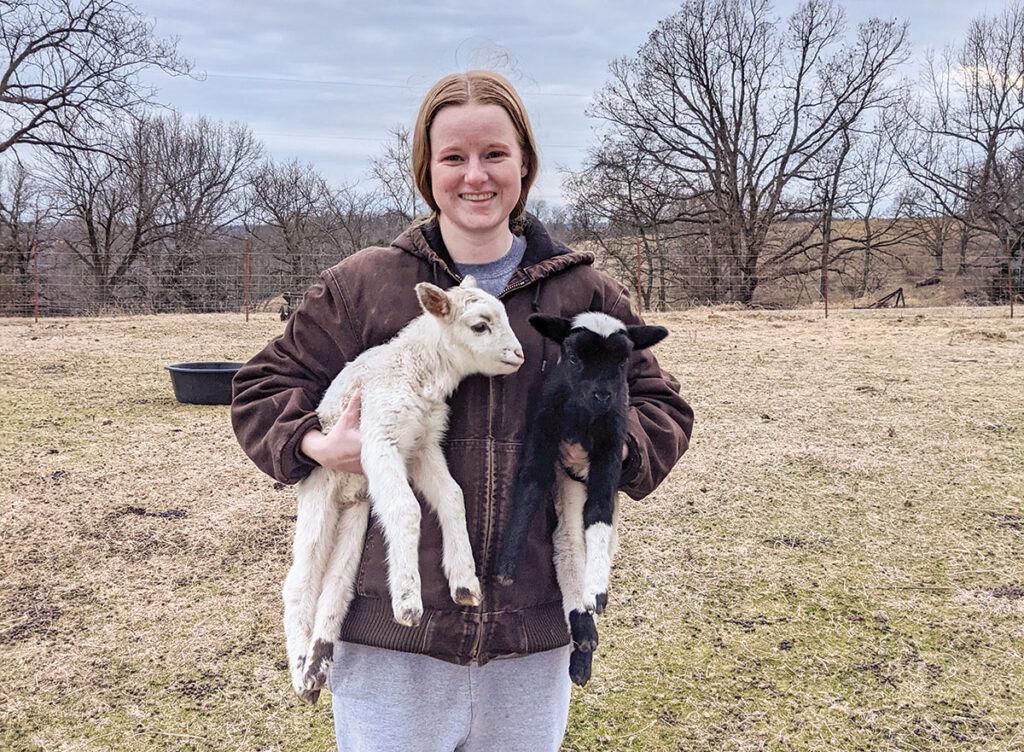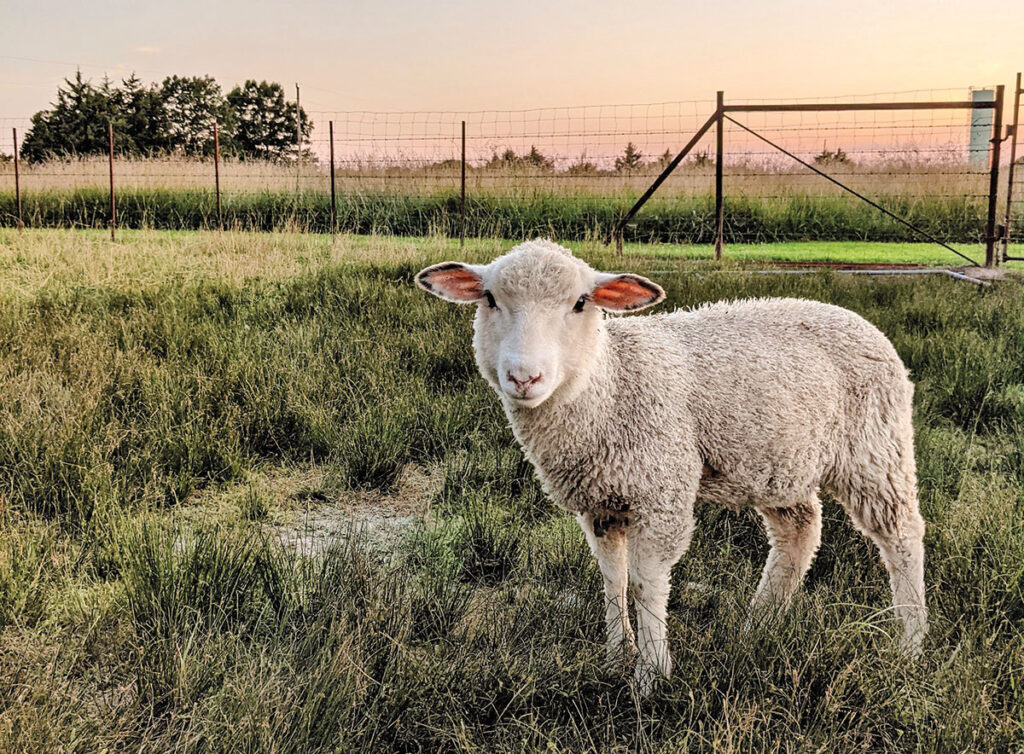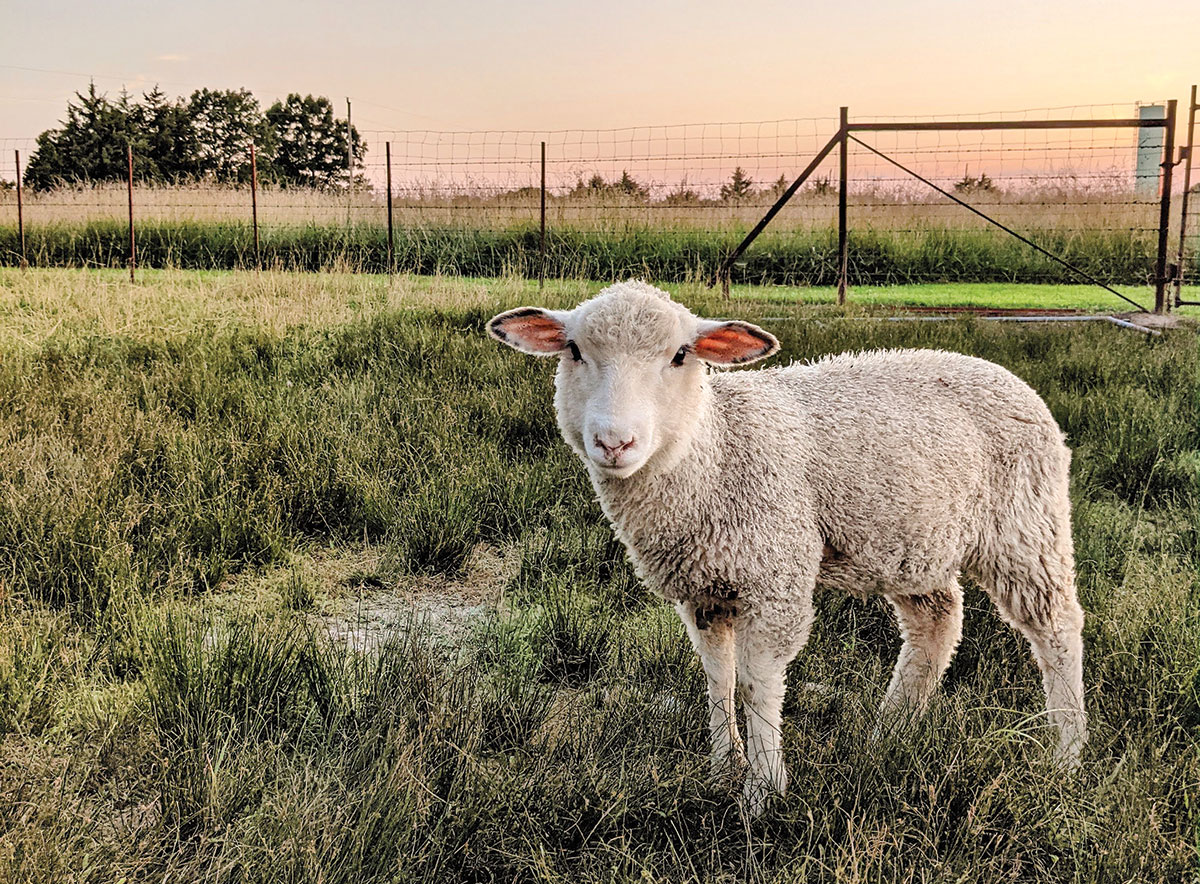
Grace Archer has turned her love for sheep into a business
BERGMAN, ARK. – Raising sheep is a great love of Grace Archer. She started her flock in 2019, 30 miles north of Harrison, Ark., and has slowly grown from her first sheep to 21. Most of the sheep are on Clay Creager’s, her boyfriend, farm, but she keeps some of her pet sheep on her parents’ farm. Her parents and Clay care for the sheep while she is at work or when she is at college at Southwest Baptist University in Bolivar, Mo.
Grace finds her sheep at the sale barn and through Facebook or Craigslist. Many of these sheep need special treatment or just some tender loving care, something she is happy to provide. Grace said she chose sheep because “they’re easier and more inexpensive to work than cattle.”
“I enjoy being around them, they have great personalities, and they’re not dangerous like the larger animals,” she said.
Grace’s first ewe was a Dorper named Jolene she got from her vet as a lamb.
“Our vet told me if I could catch one of the lambs in his field that I could have one,” Grace recalled. “That was easier said than done. What ensued was an hour of me and Dad running around the field like chickens with our heads cut off trying to catch a lamb.”
Jolene quickly adapted to the Archer family on the car ride home and became a family pet and the first of many sheep to follow.
Grace said the lamb reminded her of “the Biblical analogies of lambs being so innocent and trusting.” Jolene loved her new home and her new people, thriving in the happy environment.
“Jolene was special, she was friendlier than any dog, had such a good personality, would sit with me in the lounge chairs on the porch,” Grace recounted. “Sheep were like potato chips after that; I couldn’t just have the one.”
The story of Jolene had an unfortunately sad ending as Grace lost her in January to a ruptured uterus after giving birth to twins.
“I guess that’s the part that sucks the most about farming,” Grace said. “You learn to do most everything yourself and in Jolene’s case, I’m not a surgeon and I couldn’t save her. But it’s not all bad. I’m grateful she was my first sheep. She instilled in me a drive and a love for raising them. I’m grateful for the time that I got to have with her.”
Driven by Jolene’s memory, she plans to expand her operation in the future, hoping to reach 100 head. She currently runs the flock on about 30 acres but wants to fence in more land for them and any more sheep she acquires in the future. The main issue she faces with expansion is the cost of the specialty fencing, which she said is the most expensive part of raising sheep.
Despite the challenges, Grace is excited to grow her sheep flock.
In the flock, Grace keeps both haired and wool sheep.
“I actually love the wool for their disposition and to sell wool but I’m not a great shearer,” Grace explained. “And they sell worse at auction because they have to be sheared.”
As a result, she primarily sells haired sheep for the improved profit and keeps the wool sheep as her pets and shears them herself. Since wool does not sell well in the Ozarks, Grace sells most of her wool online through Etsy and occasionally to locals who want to spin or craft with it. In the past, she has sold whole fleeces, but that is rare. One year, she said the wool was worth nothing, and she used it as insulation in her barn.

“Wool is bug proof and fireproof because of the lanolin,” Grace said. “I hate having to shear a whole ewe just to use the wool as insulation.”
Because she keeps both haired and wool sheep, Grace’s breeding focus is more for the comfort of the mothers and quality of the lambs. She prefers to keep a smaller ram for first-time mothers. Grace currently runs a Shetland ram with the first-time mothers to encourage smaller lambs to make giving birth easier. With the experienced ewes, she runs a Merino ram because he breeds big lambs which sell better. Except for her ram, Grace doesn’t have a strong preference on the sheep she buys. Instead, she likes to find sheep that need a little TLC.
“I accumulate a lot of ‘project sheep.’ I’ve got a soft heart,” she said. “So, I wouldn’t say I have a strict breeding program, but I try. I keep the best ewes for my flock. I sell or eat any that have problems.”
She noted such problems include being prone to prolapse, bad mothers or having bad wool.
She said many people don’t like the larger wool breeds for meat because of the “gamey taste,” but she enjoys all varieties of lamb and mutton.
Grace waits until her lambs are around 50 pounds and 2 months old before she sells them.
She said that time is the best time to wean them as well, so it works out perfectly.
Feedlot buyers, which are Grace’s primary buyers, like them around that age and size to fatten for butchering. Other farmers looking for lambs to increase their herds also like them around that age. Her sales are usually local: either to farmers she knows or at a monthly sale at a livestock market.
“If I know someone that’s looking, I’ll sell them for a lot cheaper because I know where they’re going,” Grace said of her lambs. “That’s the only way I sell ones I’m attached to.”
Through these means, her sheep have sold well. Well enough, in fact, she’s able to consider expanding in the future to add more to her herd.
For Grace, there is something more in sheep production, however, than dollars and cents.
“I have livestock for the same reason I do art, not because I plan to get rich off of it, but because I find it fulfilling,” she said. “It has its bad and its good days but overall, I’d never give it up.”







